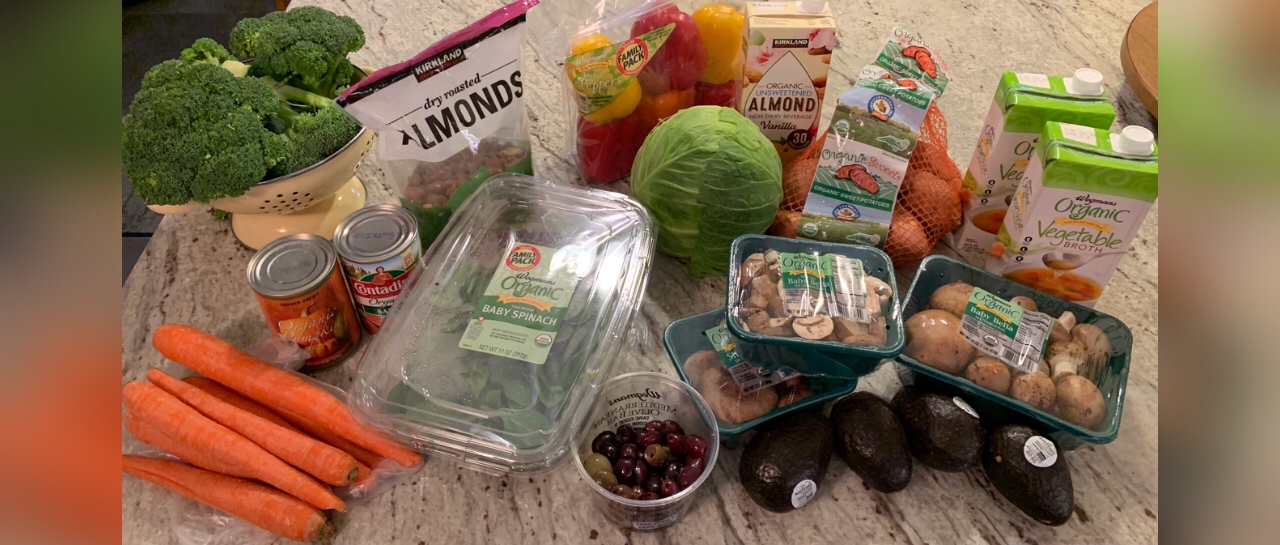What is the Fasting Mimicking Diet (FMD)?
The Fasting Mimicking Diet, from Valter Longo’s book titled The Longevity Diet, has created quite a buzz in nutrition science circles lately. Various forms of fasting have been shown to improve and even reverse many diverse health issues from autoimmune disease to cardiovascular disease and diabetes. So, when I heard about Valter Longo’s work and the FMD, which allows eating small meals during the “fast”, I was intrigued and decided to check it out.
Here are some specifics on the FMD that he recommends in the book:
- It’s not technically fasting. It is a low-calorie, vegan, low-protein plan meant to only last 5 days (7 maximum) at a time, no more than once per month.
- The idea is that the FMD initiates the benefits of fasting while still allowing food, making it easier and more pleasant, thus increasing compliance.
- Longo sells and recommends using his Prolon diet option, which costs about $250 for the 5 days worth of food and consists of soups, shakes, and bars.
- He also mentions a Prolon alternative in his book that consists of eating 800 calories per day – half from vegetables and half from plant-based fats (avocado, olives, and nuts). This is the option I chose.
- While Longo recommends a low protein, pescatarian, Mediterranean-type diet as a standard diet while not fasting, significant health improvements have been shown even if the diet outside of the 5 day FMD is not changed.
If you’re interested in learning more about Dr. Longo’s fascinating work at the University of Southern California’s Longevity Institute, check out his book on the subject, The Longevity Diet, for yourself. There are specific chapters on the benefits of this fasting approach for weight loss, cancer, diabetes, cardiovascular disease, Alzheimer’s disease, and autoimmune disease.
My Results
I did three five-day cycles of the Fasting Mimicking Diet spaced over a 4-month period. I was thrilled with the results that showed in my bloodwork, which was taken in January and again in May. In that period, five of my “bad” cholesterol levels were all reduced and my “good” HDL cholesterol was raised five points. I’m convinced that this diet, done only for a cumulative 15 days, improved my health indicators significantly.
[table id=1 /]
How I Found the FMD
Sitting in a nutritionist’s office last fall, I was surprised by her recommendation to cut my fat intake. I’d been on the low-carb, grass-fed meat, pastured eggs, and raw-milk train for a while and her recommendation sounded dated to me. This can’t be right, I thought. This nutritionist went through the Institute for Functional Medicine. Hasn’t she read Mark Hymen’s books? I was confused because there seems to be a growing body of evidence that saturated fat from clean animal sources is good for us.
But then she told me to have some bloodwork done. While looking at my 23 and Me genetic report, she told me, “I’ll bet your cholesterol is high. I have this same gene snip that you do. It means that we’re prone to high cholesterol – and heart disease.”
She was right. I was shocked to see that my cholesterol WAS high, although moderately so.
And so, I had to consider my options.
- Take a cholesterol-lowering medication (a statin). I really, really didn’t want to do that for a myriad of reasons.
- Take the nutritionist’s advice and cut back on saturated fat. That would involve giving up that delicious milk from our cow share that I enjoy in my coffee every morning. And cutting back on eating eggs from my pastured chickens, which I take care of every single day. And not eating the grass-fed beef and pastured pork that my husband proudly stocks in our freezer. Scratch that.
- I could find a different way. Was there another way?
The Road Less Travelled
It was about that time that I started hearing about the FMD on not just one podcast, but several. This led me to read the book and decide to do an experiment. I decided to do the recommended 3 cycles (5 days on, at least 25 off), then check my bloodwork again.
I was thrilled by the results.
But what did I REALLY think of the actual diet, while I was in the middle of it? I chose to make my own food, eating mostly vegetables, some fats, and some whole grains (like brown rice and Ezekiel bread). No, it was not fun. To be honest it was a lot of work, and I was hungry a good part of the time. There was a lot of planning, measuring, chopping, and preparing. And there was a good deal of math to be done during meal preparation. But meals were pretty satisfying – for an hour or so anyway. Since I still had to cook dinners for my family, this was especially challenging. But I knew that in just five days, I’d go back to my usual cooking routine.
The Fasting Mimicking Diet definitely helped me to appreciate the food I was eating and to eat it more mindfully. I was still able to fit in a couple of cups of coffee (with almond milk) and even a square of dark chocolate on a few of the days.
For future cycles, I would like to find a way to do the FMD with less weighing, measuring, and preparing, but while still eating real food – as opposed to the price bars, shakes, and soups in the Prolon product. I’m not sure exactly how that would work, but I’m going to think on it.
As I weigh the occasional FMD cycle against the other options of dealing with an increased likelihood of disease down the road, or the idea of taking a statin, this option was a piece of cake. Except without the cake. Or meat. Or cream in my coffee. But knowing it was temporary made it much easier. And it was completely worth it.
If you have high cholesterol, how have you dealt with it? What questions do you have about the FMD? Leave a comment to let me know.







Hi Jeni,
Great post and very interesting! I’ve reading a bit about intermittent fasting recently. You have a six or eight hour eating window each day. The rest of the 24 hour period is fasting. In Longo’s book, did he talk at all about kids or teens following this way of eating? MC is 13 and just found out she has pretty high cholesterol. We have an appointment to see a nutritionist next week. But I can honestly say it is not her diet. It is lack of exercise and very slow metabolism resulting from her various diagnoses. I don’t what we are going to do. I definitely don’t want her to go on a statin.
Hi Stephanie! I haven’t read anything about kids/teens using any of these fasting approaches. That would be a great question for her nutritionist! Yes, the genetic/metabolism cholesterol issue is tricky. Adding in some oatmeal wouldn’t hurt if she doesn’t already eat that, but again the nutritionist would be a great resource for you. Let me know what she says! Thanks for reading!